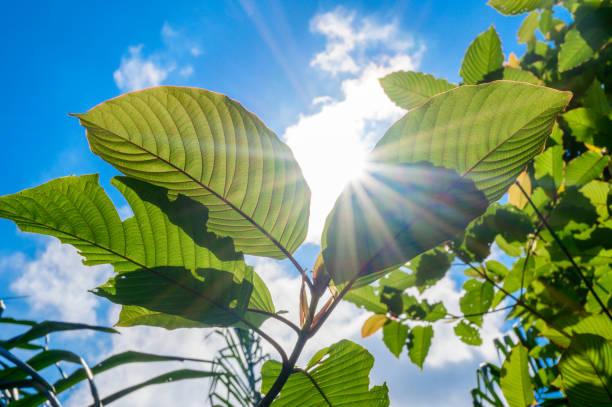
Features of Growing Kratom in Latin America
09 December, 2022What are the kratom growing zones in Latin America, and what does it take to cultivate the plant?
Most of the supplement comes from the deep jungles of Thailand and Malaysia. That may change, and manufacturers might soon derive the ingredients for Maeng Da kratom pills from Mitragyna speciosa plants grown in Latin America. Click here to get more info about this kratom pills.
The region’s climatic conditions may be favorable for the plant’s growth. Is the supplement legal in Latin America, and would cultivating it cause you any problems?
Keep reading to find out.
Can Kratom Grow in Latin America?
Kratom is a tree indigenous to Southeast Asia. A closer look at the climate in this region points to warm, humid conditions that are present all year round. The plant may also do well in certain areas of Latin America with the same climatic conditions.
Humid tropical areas in the region include:
- Northern Argentina
- Southern parts of Brazil
- Southern parts of Bolivia
- Venezuela
- Paraguay
- Peru
- Ecuador
- Colombia
- Uruguay
Growing Kratom in Latin America
For those interested in exploring different varieties of kratom, the White Malay strain, available from Kingdom Kratom, offers a unique profile that might appeal to many users.
Latin America’s climate is favorable for the plant’s cultivation. If you embrace the kratom culture and decide to grow it in Latin America, you should be able to cultivate it easily.
Germinating Kratom Seeds
The seeds need to be fresh before planting. Sourcing them from a reputable store is crucial. You may also opt for online stores selling kratom in Mexico and other locations.
If you find getting fresh Mitragyna speciosa seeds in Latin countries challenging, try the following methods:
- Import indigenous seeds from Southeast Asia or Northern America. Make sure you familiarize yourself with laws concerning the transportation of kratom products first.
- Grow starter plants instead of seeds. For this method, the crop is already germinated. It’s also ideal for beginner kratom cultivators.
Soil plays a significant role in the successful growth of the plant. It should have the following properties:
- Rich and fertile.
- Good drainage.
- A pH level between 5.5–6.5.
Nurturing Kratom Plants
When taken care of, the kratom tree can rise to 100 ft. It requires the following conditions before it can mature for harvesting:
- Plenty of nutrients and water. In most Latin American regions, this shouldn’t be a problem due to the tropical conditions in the area.
- Sunlight to ensure the plant grows healthy leaves.
Harvesting Kratom Plants
It may take up to one year for the kratom tree to fully mature. The tree’s height also indicates if it’s ready for harvest. 10–20 feet is typically ideal.
The best time to harvest the supplement is when the leaves are about to fall off, as mitragynine is more active then. The onset of flowering isn’t an indication of readiness.
Harvesting just before the leaves fall ensures the potency of your plants, like Kali kratom, which is available in powder and capsules.
Factors That Affect the Growth of Kratom
The following are things that influence the cultivation of this plant in Latin America.
The Legality of Kratom in Latin America
In most countries of Latin America, kratom is legal, apart from Argentina, which banned all related products back in 2017.
The government didn’t disclose any evidence or scientific data to support its decision. It remains unclear why the South American country outlawed the plant.
In other countries, the supplement isn’t outlawed but is under the scrutiny of the authorities. For example, in Brazil, it’s classified as a psychoactive drug. The government has strict control over the importation of kratom.
The lack of extensive research on the supplement and its effects contributes to the legal state of kratom in Latin America. It could also result from low adverse reports of kratom use in the region.
Kratom Education and Resources
There’s very little research on the plant in kratom growing zones. Valuable information in helping people interested in cultivating it in the region is scarce. It could be a significant factor in deciding the future of kratom in the area.
Availability of Kratom Seeds and Starter Plants
Even though the plant is legal in most Latin American countries, vendors that can sell kratom seeds are scarce. The few that exist operate online, for example, in Mexico. There’re also stores in Colombia, Peru, and Chile.
Will Latin America Adopt the Kratom Culture?
Latin America has a conducive environment and legal conditions for the growth of kratom.
The following reasons could sway more people into farming and using it in the future:
- The increasing popularity of the plant, especially in the health sector, for pain relief and treating opioid addictions.
- Popularization of kratom in the world, especially in the Northern Americas.
- The economic potential of the plant due to increasing demand from users and manufacturers.
Follow Sounds and Colours: Facebook / Twitter / Instagram / Mixcloud / Soundcloud / Bandcamp
Subscribe to the Sounds and Colours Newsletter for regular updates, news and competitions bringing the best of Latin American culture direct to your Inbox.

